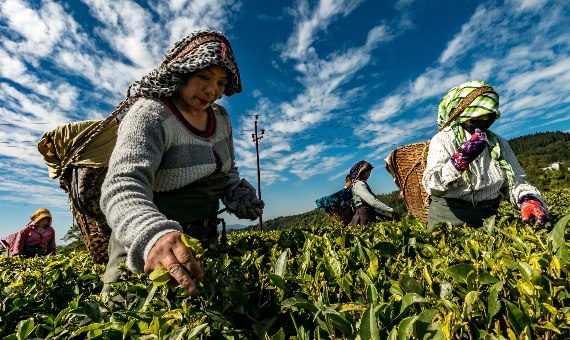Context
According to the United Nations’ World Economic Situation and Prospects 2024 report, global inflation is estimated to have dropped to 5.7% in 2023 and is projected to further decrease to 3.9% in 2024.
About
- The World Economic Situation and Prospects 2024 presents an outlook for the global economy and underscores the importance of global cooperation and prudent policies to lift global growth and accelerate progress towards the SDGs.
Key Finding on Food Inflation:
Global Inflation Trends:
- Global inflation is estimated to have dropped to 5.7% in 2023, with a projected further decrease to 3.9% in 2024.
- However, Food inflation is anticipated to rise, posing a threat to the well-being of the impoverished and food-insecure populations.
Regional Variances:
- Core inflation has moderated in various regions, including Latin American and East Asian economies, but food inflation remains elevated.
- Food inflation notably increased in the second half of 2023, particularly impacting Africa, South Asia, and Western Asia.
Headline Inflation and Core Inflation
- It is the total inflation in an economy. The headline inflation figure includes inflation in a basket of goods that includes commodities like food and energy.
- It is different from Core Inflation, which excludes food and energy prices while calculating inflation.
Causes of Food Inflation:
- Weak local currencies, climate-related shocks, and limited pass-through from international prices to local prices contribute to the ongoing increase in food inflation.
- The resurgence of the El Nino weather phenomenon further amplifies the challenges by influencing climate patterns.
Food Inflation
- It refers to the rise in the prices of food commodities over time, focusing exclusively on changes in the cost of food items within a consumer’s basket of goods and services.
- This specific measure of inflation, known as food inflation, has broader implications as it often leads to cost-push inflation, contributing to increased prices across various goods and services.
Impact on Food Security:
- The report emphasizes that high food prices significantly exacerbate food insecurity in developing nations.
- Acute food insecurity affected at least 238 million people in 2023, witnessing an increase of 21.6 million from the previous year.
Disproportionate Impact on the Poor:
- Food inflation disproportionately affects the poorest households, which allocate a larger share of their income to food expenditures.
- In low-income African and South Asian regions, spending on food accounted for more than 40% and 36% of total consumer expenditures in 2022, respectively.
Poverty and Global Economic Challenges:
- The inflationary trend, particularly in food prices, exacerbates poverty rates in low-income nations, surpassing pre-pandemic levels.
- Global economic growth is expected to be below the pre-pandemic 3% growth rate, slowing from an estimated 2.7% in 2023 to 2.4% in 2024.
Challenges in Developing Nations:
- Developing nations face challenges such as persistently high interest rates, escalating geopolitical conflicts, slow international trade, and climate-related calamities.
- Public debt in low-income nations reached all-time highs in 2023, posing significant challenges to the global economy.
UN Report urges increased funding and debt solutions to tackle climate, poverty, and hunger crises.
- Financial constraints: Addressing international financing and debt sustainability is crucial to achieve the SDGs and improve financial flows to developing economies.
- Revitalizing trade and finance: The multilateral trading system needs revitalization, along with reforms in development finance and the global financial architecture.
- Climate finance gap: Climate finance remains far below the level needed to achieve a carbon-neutral world by 2050. Massive scaling up of climate financing and effective operationalization of the Loss and Damage Fund are crucial.
- Focus at World Economic Forum: The upcoming WEF, held in Davos, Switzerland, from January 15-19, 2024, will focus on cooperation and long-term systemic approaches to address these challenges.
- Massive Investment Needed: $150 trillion by 2050 for energy transition technologies and infrastructure, with $5.3 trillion annually for the energy sector alone.
- Urgent Funding Gap: Current climate finance remains far below the required level to limit global warming to 1.5°C.
- Prioritize Vulnerable Nations: Effective operationalization of the Loss and Damage Fund and increased financing commitments are crucial to help developing countries cope with climate disasters.

